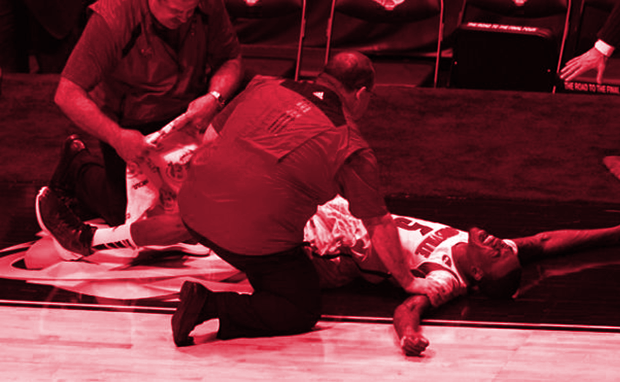This post may contain affiliate links. Please read our disclosure policy.
Da’Sean Butler was a star guard at West Virginia University. He turned down the NBA for a chance to lead the Mountaineers to an NCAA Championship. As he played in the 2010 Final Four, Butler tore his ACL and sprained his MCL on a baseline drive in the second of the game against Duke. The troubling scene saw the young player lying flat on the court, devastated by the idea of his career being lost as his coach consoled him. West Virginia is a Nike sponsored program.
This year in the NBA, both Rajon Rondo and Leandro Barbosa suffered season ending ACL tears. Outside of both being Boston, both played previous seasons in switched brands during their career. Rondo wore Reebok early in his career, and Barbosa wore adidas. When they were injured, both players were wearing Nike sneakers.
Injuries are a part of sports. Athletes put themselves through strenuous regiments to get in shape, and play long season. The physical exertion an athlete experiences on a regular basis is hard to fathom. Larger-than-life human being performing high-flying, fast-moving activities heightens risk exponentially. If adidas shoes were the baseline for knee injuries, would Minnesota Timberwolves point guard, Ricky Rubio, whom tore his ACL while wearing Nikes in 2012, make the switch to the 3-stripes as he has?
Awkward landings, unfortunate incidents, and disastrous missteps are more common in everyday life than one may think. When watching sports, and ultimately sports injuries, it is important to understand the years of studying, testing, and reworking that occurs prior to a shoe being released. These are only a small sampling of recent examples of injuries that have occurred on the basketball court. The range of shoes worn during injuries, and how they occurred is enough proof to conclude that It’s Not The Shoes.




